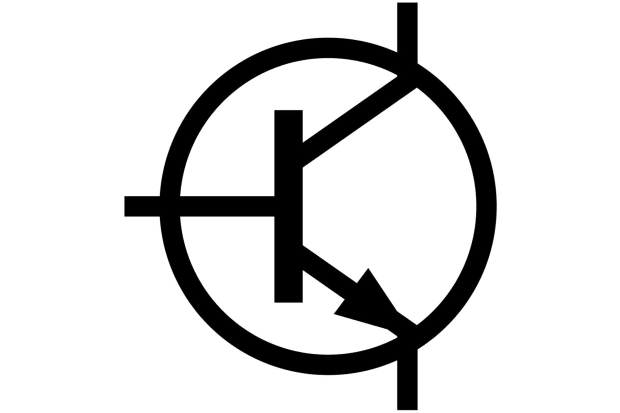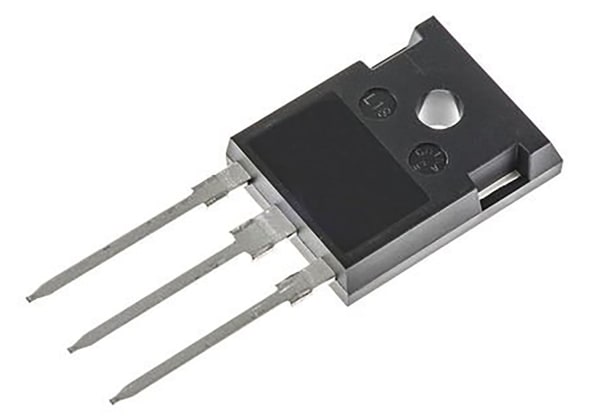- Published 17 Jan 2023
- Last Modified 8 Jan 2024
- 8 min
A Complete Guide to Bipolar Transistors
We explain how BJTs work, what bipolar transistors do, and highlight how they are used in electronic circuitry.

Reviewed by Mithun Subbaroybhat, Technical Support Engineer (December 2020)
What is a Bipolar Junction Transistor?
A bipolar transistor - properly known as a bipolar junction transistor or BJT - is a versatile discrete semiconductor device. Discrete semiconductors vary from diodes and rectifiers to BJTs, and this particular device is designed primarily to perform one function as a single semiconductor, as opposed to having to build multiple semiconductor components into an integrated circuit on a printed circuit board (PCB).
Bipolar junction transistors are solid-state, three-pin (base, collector and emitter) components, constructed from three layers of silicon. There are two main types, namely PNP (positive-negative-positive) and NPN (negative-positive-negative). As with all transistors, the basic function of a BJT is typically to function as a switch or to amplify, filter, and rectify power.
Bipolar transistors are current-controlled and operated devices, meaning that a much smaller base current causes a larger current to flow from emitter to collector. Whereas transformers can amplify either current or voltage, transistors can amplify both. In its most common emitter configuration, a BJT will naturally amplify current, but when integrated into a circuit, it can easily be made to amplify output voltage. Therefore, bipolar transistors are frequently used as a method of signal amplification across a broad spectrum of circuits, systems and product types.
BJTs were among the first functional transistor devices ever created. The earliest bipolar transistors were the results of enterprising work done by renowned postwar physicists and engineers Bardeen, Brattain and Shockley. Initially emerging from Bell Laboratories in the late-1940s, BJTs quickly became a universal standard in the decades that followed. Fittingly, their inventing trio was ultimately awarded the 1956 Nobel Prize for their efforts in bringing bipolar junction transistors to mass production.
Bipolar junction transistors can increase both analogue and digital signals, as well as having the ability to switch DC power supply or to function as an oscillator. While BJTs are designed primarily to amplify (analogue) current, they can also function as an electronic (digital) switch in circuitry.
Types of BJT
In the construction of a bipolar junction transistor, three layers of semiconductor material are sandwiched together. Depending on how these layers are arranged, we get two main types of bipolar transistor - PNP or NPN.
A semiconductor is a type of material that allows a certain level of electron flow through it. It is therefore neither a true conductor nor an insulator. The overall level of conductivity for a given semiconductor material can be influenced by introducing various impurities at the manufacturing stage, in a process known as doping.
By impacting on the number of electrons in the semiconductor material, doping can either increase or decrease both its conductivity and the direction of current flow from layer to layer. This will depend on the type of impurity added or removed and the way that the layers are arranged.
In a BJT, either one or two of its semiconductor layers will have been doped to increase the electron count, making it negatively charged, or N-type. On the other hand, the remaining one or two layers will have been doped with holes to introduce electron deficiencies, making it positively charged, or P-type.
Depending on the type and arrangement of doped layers in the BJTs semiconductor sandwich, the direction of current flow across the BJT can be flipped. This results in two basic types of bipolar transistor construction. A PNP transistor has a layer of N-type semiconductor sandwiched between two layers of P-type material, and the reverse is true of an NPN transistor:
- The acronyms PNP (positive-negative-positive) and NPN (negative-positive-negative) denote the ordering of the sandwiched semiconductor layers in the BJT
- Current will flow in either one direction or the other, depending on this arrangement of silicon layers
- NPN transistors have a piece of P-type silicon (the base) sandwiched between two pieces of N-type (the collector and emitter). This is the most common base configuration
- PNP transistors reverse this order
- The most commonly used transistor configuration is the NPN transistor

NPN Bipolar Transistor
NPN transistors are the most commonly used type and are manufactured so that electrons pass from emitter terminal to collector terminal. This causes current to flow the other way (i.e. from collector to emitter) and then onward to the rest of the circuit. This is essentially the standard configuration for a transistor. In practice, this means that an NPN BJT turns on when the current flows through its base terminal.

PNP Bipolar Transistor
A PNP BJT functions the same as an NPN bipolar transistor except the entire process unfolds in reverse. Thus, current flows from the emitter pin to the collector pin, rather than the other way around, with the collector receiving an absence of electrons (the holes).
Although the common base still controls the overall flow rate, a PNP bipolar transistor is turned to on by a low signal (ground), as opposed to an NPN transistor which is turned to on by a high signal (current). This makes a PNP transistor able to amplify AC signals in applications such as driving speakers. It can pull the speaker cone inward from its neutral position to generate louder sounds through air movement than DC currents which only push it outward.
BJT Characteristics
Bipolar transistors have various characteristics that make them highly effective. BJT characteristics include:
- They can take a low input current and use it to output a much larger one
- Whereas mechanical switches always need an actuator to be physically moved to function, the binary on/off states of a transistor switch are instead voltage-controlled at the base configuration
- Unlike mechanical switches, they can be controlled by a PWM (pulse-width modulation) signal
- Transistor switches do not suffer from any physical bounce, unlike mechanical versions
Bipolar Transistors Switching Characteristics
Controlling the flow of power from one part of an electronic circuit to another is one of the key functions that a transistor exists to fulfil. In this role, the transistor is effectively acting as an electronic switch rather than an amplifier. When pushed into either saturation or cutoff modes, a BJT essentially replicates the binary on/off functionality of a regular circuit switch. It can therefore be used to create logic gates.
This diagram shows the flow of electrons through a simple circuit.
(a) Mechanical switch
(b) N-P-N transistor switch
(c) P-N-P transistor switch

Bipolar Junction Transistor Theory
Bipolar junction transistors are so-called because they are created using two different kinds of silicon semiconductors to combine positive and negative charges (thus bipolar). Those two different kinds of silicon charge carriers are physically sandwiched together in varying configurations, forming a type of junction.
A bipolar junction transistor comprises three terminals or pins, known respectively as a base, a collector, and an emitter. A simple definition of collector in BJT is that it is the part of the transistor which outputs the amplified current. As with any transistor, the core working concept of a BJT is that a small amount of current flowing between the base region and collector region causes a larger current to flow between the collector and emitter regions.
In this regard, a transistor is essentially a type of amplifier - so, perhaps unsurprisingly, one of their most common applications is driving modern audio technologies. Since bipolar devices can be manufactured to handle large currents, they are particularly effective when used as high-power amplifiers in electronic audio I/O setups, as well as in other demanding technologies such as wireless transmitters.
Like all transistors, BJTs can function both linearly and non-linearly, depending on the range of the base-emitter junction current. Outside of a given model’s specified current range, the linear relationship between base-emitter current and collector-emitter current (also known as the current gain) will cease to be linear. In other words, the BJT can be driven into cutoff (off) and saturation (on) modes, as well as its standard active (amplification) mode.
Active Mode
In this mode, the transistor can function as an amplifier for the current flowing from base pin to collector. It can proportionally increase that current flow from the collector pin to the emitter.
This is among the most versatile and powerful modes that a transistor can operate in and is arguably the most common application for transistors used in circuits.
On or Saturation Mode
In this mode, the transistor effectively acts as a short circuit between the common collector and the common emitter. Current flowing between the two is essentially unrestricted as the transistor operates as a closed or complete circuit.
Off or Cutoff Mode
This mode is the opposite of saturation. The transistor essentially resembles a broken or open circuit; no collector current is allowed to flow, and so there is no emitter current output.
When driven into either cutoff or saturation mode, the BJT effectively functions more like a binary (on/off) circuit switch. In addition to amplification, this is another of the most powerful and versatile uses of transistors.

